Although drag strips are far outnumbered by oval tracks in the United States – approximately 1,043 oval tracks to just 295 drag strips – the number of competitors in drag racing nearly equals those in the circle track ranks. The NHRA alone has more than 35,000 licensed members. One reason might be that virtually any vehicle can be driven in a drag race, and with the competition rules that include handicapping, any vehicle can be competitive with any other.
Drag racing engines can run from the 7,000-plus hp nitromethane burning Top Fuel dragsters, to the 5 horsepower junior dragsters that resemble the Top Fuel dragsters, albeit, at 1/2-scale. In between, there are literally hundreds of chassis and engine combinations from your everyday go-to-work car, to a purpose built "weekend warrior."
Regardless of what type of engine work your shop currently does, chances are you have worked on at least one engine that found its way to the drag strip. The sport compact and import racing markets are growing daily; but we aren’t going to focus on that area of drag racing as it’s been covered extensively in recent issues of Engine Builder.
Although there are many organizations that sanction drag racing in the United States, the two main organizations are the National Hot Rod Association (NHRA) and the International Hot Rod Association (IHRA). Nearly all other groups take their cues from these two sanctioning bodies, and while other groups may have their own competition rules, nearly all abide by either NHRA’s or IHRA’s safety rules.
Of course, if you’re going to build an engine for a particular organization and class, you need to be familiar with their rules. In some classes, internal engine modifications may be unlimited, while in others those modifications may be strictly limited. NHRA and IHRA, for instance, list approved replacement parts for most of their "Sportsmen" classes.
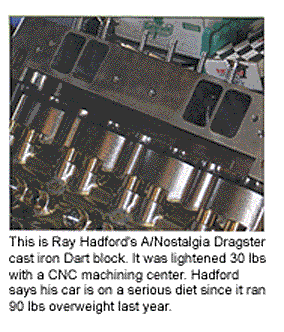
For simplicity sake, we’ll use the NHRA’s classes as we discuss different engines and classes. These class listings and descriptions are courtesy of NHRA. IHRA is set up similarly. Top Fuel, Funny Car and Pro Stock are just three of the more than 200 classes of vehicles featured in NHRA competition. Those classes are grouped into 12 categories, or eliminators, each strictly governed by NHRA rule makers. Class eligibility is based on various requirements and specifications, including type of vehicle, engine size, vehicle weight, allowable modifications and aerodynamics.
The four Professional categories are Top Fuel, Funny Car, Pro Stock, and Pro Stock Motorcycle. They, along with Top Alcohol Dragster and Top Alcohol Funny Car and the three "Super" classes – Super Comp, Super Gas and Super Street – feature a single class of vehicle in heads-up competition. The remaining categories – Comp, Super Stock and Stock – are made up of a variety of classes and use a handicap starting system to equalize competition.
Top Fuel
Top Fuel dragsters are the fastest-accelerating vehicles in the world. The 25-foot landlocked missiles can cover the quarter-mile in 4.4 seconds at speeds in excess of 330 mph. The engine of choice for most teams is an aluminum version of the famed 426 Chrysler Hemi. These supercharged, fuel-injected, nitromethane-burning engines produce an estimated 8,000 hp.
Funny Car
With aerodynamically enhanced carbon-fiber bodies that loosely resemble the production cars on which they are based, these supercharged, fuel-injected, nitromethane-burning machines travel the quarter-mile in 4.7 seconds at more than 325 mph. Most teams use an aluminum version of the 426 Chrysler Hemi engine that produces an estimated 8,000 hp.
Pro Stock
Pro Stock cars look a lot like streetcars, but looks can be deceiving. Extensive modifications to the cylinder heads, manifold, chassis, and suspension thrust them to 6.7-second elapsed times at more than 200 mph. The most popular engine choices for these carbureted, gas-burning vehicles are the GM big-block wedge, the Mopar Hemi, and the Ford wedge.
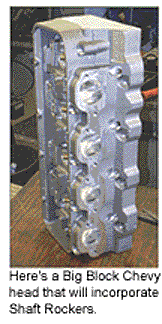
Pro Stock Bike
Producing more than 300 hp, these highly modified motorcycles can cover the quarter-mile in less than 7.1 seconds at more than 190 mph. The chromoly steel chassis is cloaked in a lightweight, aerodynamically enhanced replica of the original motorcycle body, and the carbureted gasoline engine may be a Harley V-twin – two-valve or four-valve.
Top Alcohol Dragster
Top Alcohol Dragsters bear a striking resemblance to Top Fuelers, but most burn methanol. Nonsupercharged nitro-burning entries are also permitted. These vehicles can cover the quarter-mile in less than 5.3 seconds at speeds faster than 260 mph. They are the quickest class in the regional Lucas Oil Drag Racing Series.
‘
Top Alcohol Funny Car
Top Alcohol Funny Cars look like their fuel-burning counterparts, but instead of nitromethane, they burn methanol. The performance marks of the cars are in the mid-five-second range at better than 260 mph. This class shares the spotlight with Top Alcohol Dragster in the regional Lucas Oil Drag Racing Series.
Competition Eliminator
Comp, which boasts 80 classes, showcases a variety of gas-burning dragsters, altereds, street roadsters, coupes, sedans, and trucks powered by engines ranging from tiny four-cylinder screamers to powerful V8s. Some are supercharged, others turbocharged, but most are carbureted. A handicap starting system equalizes competition.
Super Stock
Super Stock features an array of stock-appearing foreign and domestic factory automobiles and sports cars with limited modifications. Eighty-three classes of cars and trucks, from late-model sedans and passenger vehicles to vintage muscle cars from the 1960s and 1970s, are showcased. A handicap starting system equalizes competition, and breakout rules apply.
Stock Eliminator
Stock encompasses a variety of foreign and domestic production vehicles. Everything from late-model passenger cars and trucks to the popular vehicles of the 1960s and 1970s can participate in any one of Stock’s 102 classes. Few modifications or alterations are allowed. As in Super Stock, a handicap starting system is used, and breakout rules are enforced.
Super Comp
Super Comp features one class of vehicle and is the quickest of the three Super classes. Made up mostly of gas-burning dragsters, though full-bodied production vehicles and roadsters are eligible, Super Comp features heads-up competition on an 8.90-second index. Engine modification is virtually unlimited.
Super Gas
Super Gas features mostly full-bodied production vehicles with full fenders, hoods, grilles, tops, windshields, and functional doors. Left-hand-steering street roadsters are allowed, but dragsters are not. The class is governed by the same rules as Super Comp; only the index is different. A heads-up start is used, but racers may not run quicker than the 9.90-second index.
Super Street
Super Street, designed as an entry-level category. It is reserved for full-bodied production vehicles, including sports cars, vans, and trucks with full fenders, hoods, grilles, tops, windshields, and functional doors. Racers compete on a 10.90-second index.
Sport Compact
Sport Compact cars are exotic four- and six-cylinder machines fed by turbochargers and nitrous oxide. Racecars in the fastest classes can cover the quarter-mile in as few as six seconds at more than 200 mph, but NHRA also offers novice and intermediate categories for every level of enthusiast. Many people think Sport Compact racing is only for imports such as Hondas and Toyotas, but there’s room for the Detroit makes in this extremely popular scene.
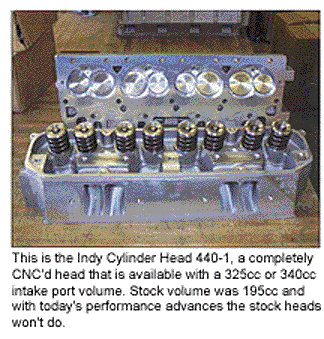
Jr. Dragster
A half-scale version of a Top Fuel dragster designed to be driven by kids ages 8-17 in the NHRA Jr. Drag Racing League. Using a five-horsepower, single-cylinder engine, a Jr. Dragster can go as fast as 80 mph in as little as 7.90 seconds on the eighth-mile.
E.T. Brackets
Just about any vehicle, from a dragster to a muscle car to a grocery-getter, can compete in E.T. bracket racing at NHRA’s 140 member tracks in the United States, Canada, Mexico, and Puerto Rico. Believe it or not, even snowmobiles are welcome.
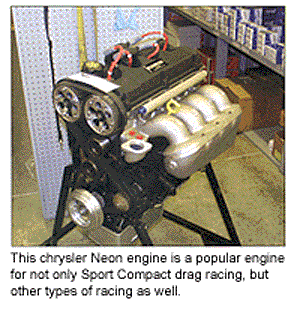
Street Legal
Street Legal cars are vehicles that are legal to drive every day on the street with valid registration and insurance. These foreign and domestic vehicles range from late-model passenger cars and trucks to today’s sport compacts. These cars typically run at NHRA Street Legal events, but they can also run at NHRA Sport Compact and NHRA Summit Racing Series events.
Reading down through these descriptions, you can see that there is a lot of opportunity for just about any shop to be involved in drag racing. However, don’t expect to run right out to the shop and build engines for the NHRA "Pro" classes, particularly the Top Fuel Dragster and Funny Car classes.
For the most part, the team builds the "nitro" engines and in most cases, they do not by assembled engines, they purchase components and assemble the engines themselves. These engines are completely rebuilt after each run, so it doesn’t make sense to by a bunch of already assembled engines.
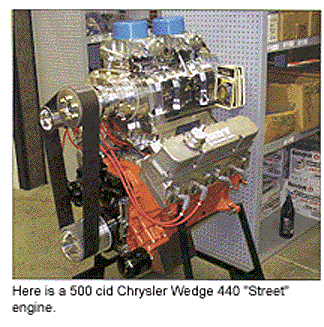
Here are some amazing facts about nitro-burning engines:
Under full throttle, a top fuel dragster engine consumes 1.5 gallons of nitromethane per second; the same as a fully loaded 747 during takeoff. They also accelerate faster than a 747, a fighter jet, or a Formula One racecar.
A stock Dodge V8 Hemi will not have enough power to turn the supercharger on a Nitro Dragster or Nitro Funny Car.
It takes dual magnetos to deliver the 44 amps of power it takes to fire each spark plug.
The spark plug electrodes are completely consumed during a run; by the halfway mark, the engine is running as a diesel with the fuel mixture firing from a combination of the compression and the glow of the exhaust valves. The engine can only be shut down by cutting off the fuel flow.
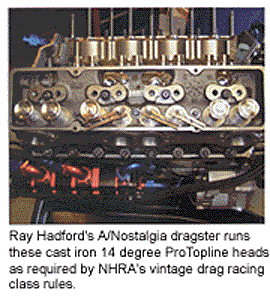
The national record for a quarter-mile in Top Fuel is 4.41 seconds set in 2003 by Tony Schumacher, while the speed record is 335.32 mph set in 2005, also by Schumacher. To reach these speeds, a Top Fuel dragster leaves the starting line with a force nearly five times that of gravity, the same force as the space shuttle when it leaves the launching pad at Cape Canaveral.
The Pro Stock class utilizes a carbureted, gas-fueled V8 that puts out around 1,200 hp. They will travel a quarter mile in less than 7 seconds and reach speeds in excess of 200 mph.
Top Alcohol Dragster and Top Alcohol Funny Car each utilizes the supercharged big block V-8’s that many of us are familiar with. These engines will produce in the neighborhood of 2,000-2,500
horsepower and will burn up the quarter mile in less than 5.5 seconds at nearly 260 mph. Most high
performance shops are capable of building these engines and, in fact, many specialize in just this one type.
However, where I see a lot of potential for a variety of shops, even those without a lot of high performance experience, is in the remaining classes. Although there might be some specialized applications within a few of these classes, for the most part, you will be seeing the same engines that you have been seeing for years.
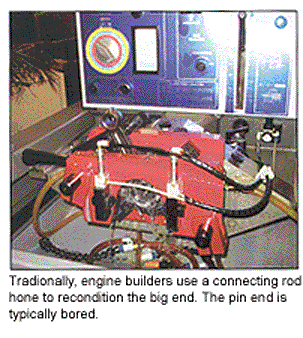
From the 4-cylinder sport compacts, to the big V8’s of the muscle car era, you’ll find lots of variety. Because these vehicles all race in either ET bracket races, or "Indexed" handicapped racing, horsepower isn’t always a concern. If you are already rebuilding automotive engines, then you will be seeing the same engines come in the door that you’re used to. Your drag racing customers however, will be looking for a little extra.
Although some of these classes may allow unlimited internal engine modifications, most are limited, even to the point that the sanctioning organization specifies what replacement parts may be used. They may also specify cylinder head volume and even the fuel used.
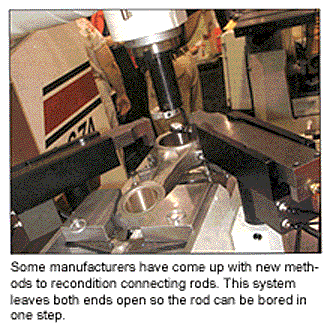
For the most part, these engines must remain stock, and owners will be looking to your shop to give them as much of an edge as you can, while maintaining the stock configuration. They will be looking for solid, strong, and durable engine performance that will give them consistent times. The more consistent their times and the closer to the indexes they can run, the more likely they will find the winner’s circle.
If you like to specialize in just certain engines, then there are other possibilities out there. The National Mustang Racers Association (NMRA) is the largest Ford focused drag racing group in the United States.
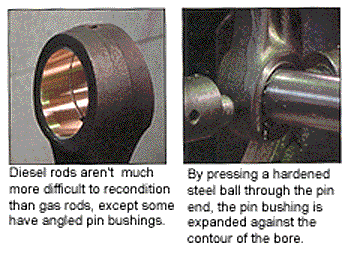
For instance, the NMRA’s Super Street Outlaw class has these limitations; Super Street Outlaw is designed for single power adder 1964 and newer Mustangs and 1979 and newer Fox and/or Mustang-based vehicles. Super Street Outlaw entries are limited to 302, 351, 460 and 4.6L or 5.4L modular engine types. 302, 351, 4.6L and 5.4L single power adder engine types are permitted a maximum of 480 cid. Turbocharged entrants are permitted a maximum of 385 cid. Big block (nitrous only) entrants are permitted a maximum of 525 cid. Any internal modifications are allowed. They must also use commercially available, mass-produced cast iron, or cast aluminum heads, no Hemi heads allowed.
This is just one of 14 classes that NMRA recognizes.
The National Muscle Car Association is another drag racing organization that recognizes 1950 and newer American production cars and trucks. They currently recognize 12 classes.
For instance, the NMCA Pro Stock Class description is as follows; Pro Stock is a naturally aspirated class designed for 1950 and newer American production cars and trucks that are equipped with stock-type chassis and 10.6? wide tires. Pro Stock entries are permitted small block and big block engines up to and including a maximum of 525 cid (depending on combination). Pro Stock permits a variety of race-proven modifications and performance enhancements on stock bodied, stock appearing vehicles.
There are numerous other drag racing associations out there, and most are similarly organized. Engine rules can vary widely, so it’s important to get a rulebook for any class or organization you’ll be building engines for. As you can see from our summary above, the world of drag racing is wide open – somewhere out there is a place for you.













